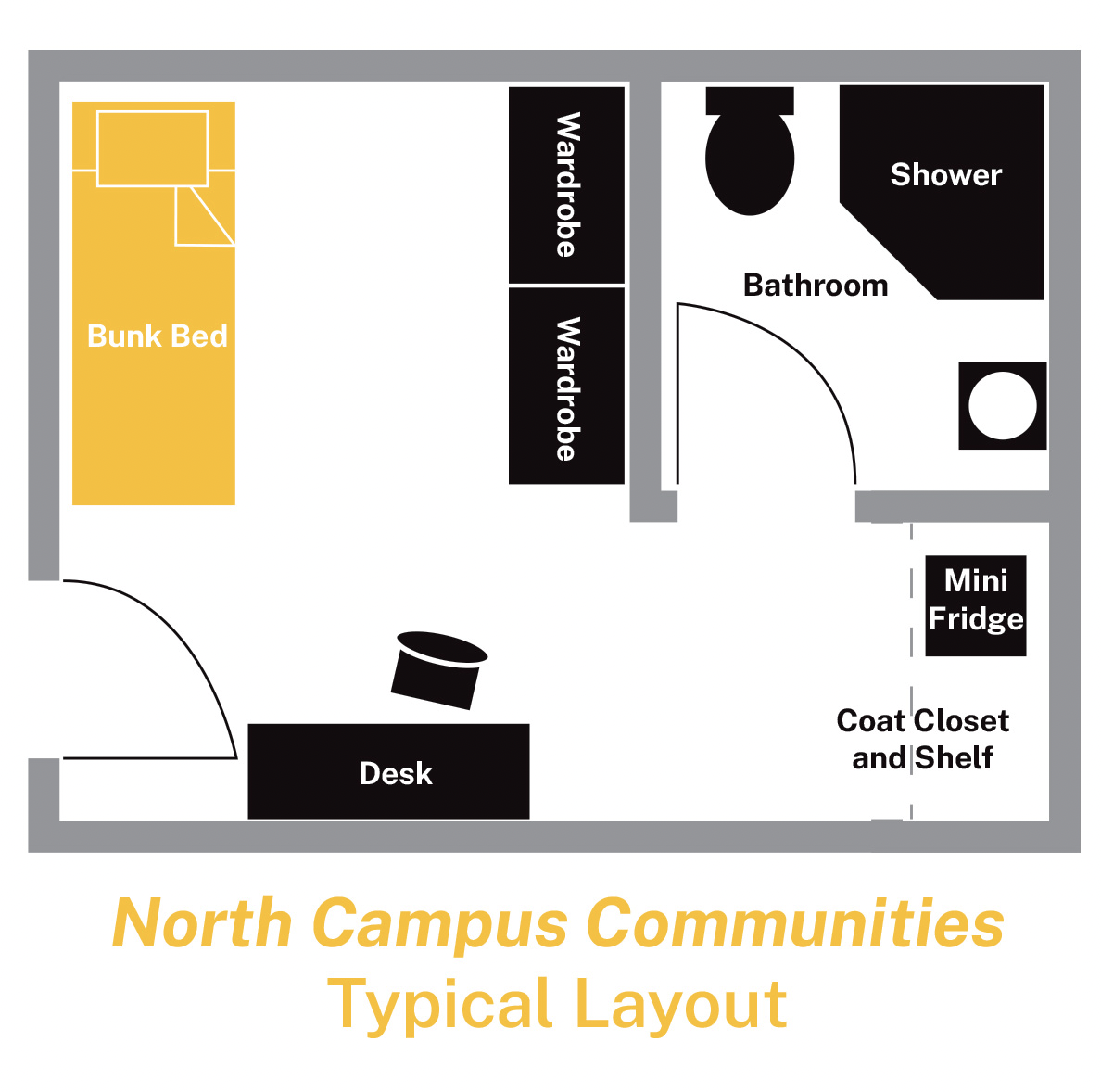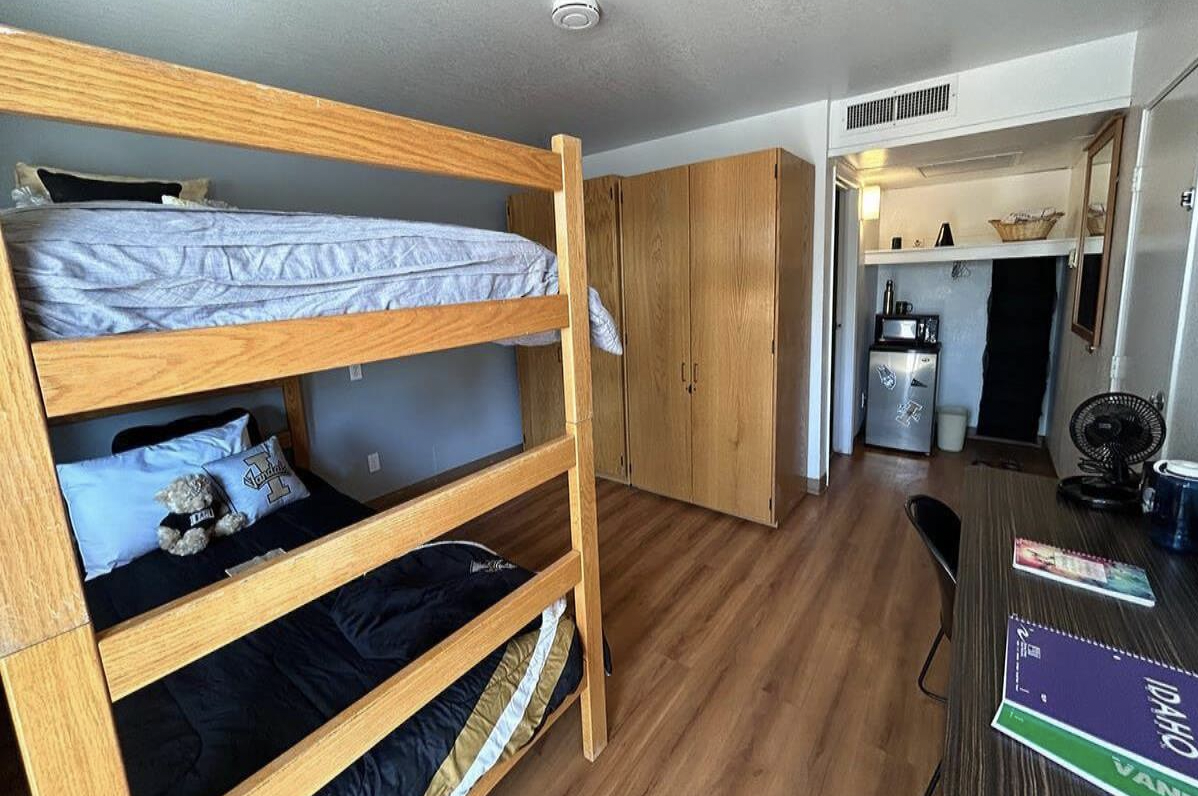When students arrived at the University of Idaho in the fall of 2022, they weren’t guaranteed a dorm room.
Over 100 students were placed by the university at the FairBridge Inn, a local hotel within walking distance to the U of I — and the university’s temporary emergency housing solution. The U of I placed most of the overflow students in residence halls within a month, but 26 male students were moved into a fraternity house where five fraternity members were living, reported student journalists with The Argonaut in September 2022. The housing crunch disrupted the first semester of college for many students, igniting stress and frustration among those who were placed in overflow facilities.
This year, university officials vowed to get ahead of the problem.
The university struck a deal with the owners of the FairBridge Inn: A one-year land lease that gives the U of I full control of the property, costing just under $500,000 per year ($41,250 per month), according to a contract obtained by EdNews through a public records request.
The university refurbished, rebranded and renamed the hotel, and will use it to house up to 160 Vandals during the 2023-24 academic year. The lease can be extended for an additional two years.
The housing crunch isn’t going away — the university will need to build more student housing in the coming years, said John Kosh, communications director for the U of I’s auxiliary services department. But this interim fix can bridge the gap by providing more student housing at a lower cost to the university.
And so far, it’s doing its job — the U of I cleared its student housing waitlists for the fall semester. Kosh described the plan as a “strong, viable solution.”
“This is how we’re dealing with it, and this is kind of how we’re going to have to deal with it until structures are physically built,” Kosh said. “We have enough beds for everyone, we weren’t caught off guard, and so far, it’s been going very smoothly.”
What North Campus Communities living looks like
Where a student lives during college can have an impact on their academic and social performance. Students who live on campus typically have higher retention rates, and are more likely to succeed academically and socially, Kosh said.
“Academia is really top of mind,” he continued. “We don’t want distractions. We want them to find their classes, we want to find them resources and get them settled.”
The U of I limited North Campus Communities — the new name for the hotel-turned-dorm — to returning students, transfer students and staff only. NCC will not house first-year students.
Students at the NCC will pay $2,425 per semester ($4,850 per year) to live at North Campus Communities, the same price as the university’s most affordable dorm. With the residence at full occupancy, that would bring in over $770,000 a year — enough for the university to cover its $500,000-a-year rent payment.
And the university tacked on some perks to living at the new residence hall, including continental breakfast to make up for the distance to the U of I’s cafeteria, and ensure that students are eating before class. Students also get individual, per-room bathrooms (for two students to a room), rather than communal floor bathrooms like other residence halls, and free parking passes for the NCC lot.
Plus, the building is equipped with security measures to make sure students feel safe, especially in the context of last November’s tragedy, when four U of I students were killed in an off-campus home.
And housing officials at the university are committed to ensuring students at the North Campus Communities have a positive college experience, as are student resident assistants, Kosh said. Student housing staff are involved in student government, and prepared to advocate for the students living in the North Campus Communities. And all staff worked tirelessly over the summer to refurnish the rooms and shape the old FairBridge into a Vandal-centered dorm hall.
“The housing team here didn’t go to sleep ’til they found a solution that worked for everyone,” Kosh said.
And that success was visible on move-in day, Kosh continued.
“To help a family move a student in…meet them and then whisk them off to orientation — it just felt natural. And that’s the way it should be. They were plugged into university right away.”
The housing crunch impacts other colleges across Idaho
The University of Idaho isn’t the only college that feels the pressure of the housing crunch — both Boise State University and Idaho State University have housing challenges of their own.
Heading into the new school year, both universities had bulky housing waitlists. And both universities saw high enrollment numbers this year, adding pressure to the problem. But universities are also preparing for a projected enrollment decline in coming years.
“We are trying to be responsive to the demand, we are trying to accommodate our students who want to live with us and who want to go to Boise State,” said Boise State’s Vice President for Student Affairs, Jeremiah Shinn. “We’re also being mindful of national and regional trends as we decide how much to expand our housing offerings. It’s a conversation that is ongoing.”
Students who are stuck on waitlists have to find off-campus housing, which is often more expensive and farther away from the central hub of student activities. And a lack of student housing can factor into students’ college decision.
“Whether a student gets housing as a first-year student, particularly those from outside the Treasure Valley, that factors into whether or not they choose to come here,” Shinn said. “Some do, but it’s likely that many do not.”
But Boise State is looking to the future. It’s building a new 278-bed dormitory, projected to be finished by August 2024. it also plans to sell a 47-unit building to the City of Boise around the same time. The city will use that building to house families in the city’s homeless community, reports Margaret Carmel with BoiseDev.
Boise State also has a sophomore-and-above housing partnership in the works, and administration has been exploring the idea of a new residence hall for first-year students.
“We’re looking at ways to add capacity to our housing inventory because again, the demand is there and and we believe will continue to be there,” Shinn continued.
Idaho State is also exploring its options, but with the university president retiring this December, there aren’t any concrete plans.
“I know there has been discussions about it,” said Craig Thompson, Director of University Housing at Idaho State. “There’s nothing moving right now, but I know the university is aware that the need exists.”
Both Boise State and Idaho State provide resources to help students who need to find off-campus housing. And the universities acknowledge the benefits that come from student housing.
“Things are at your fingertips,” Shinn said. “Faculty office hours, activities on campus, sporting events, they’re all right there. It just creates a more holistic experience for the students if they get a couple of years on campus.”
EdNews data analyst Randy Schrader contributed to this report.


